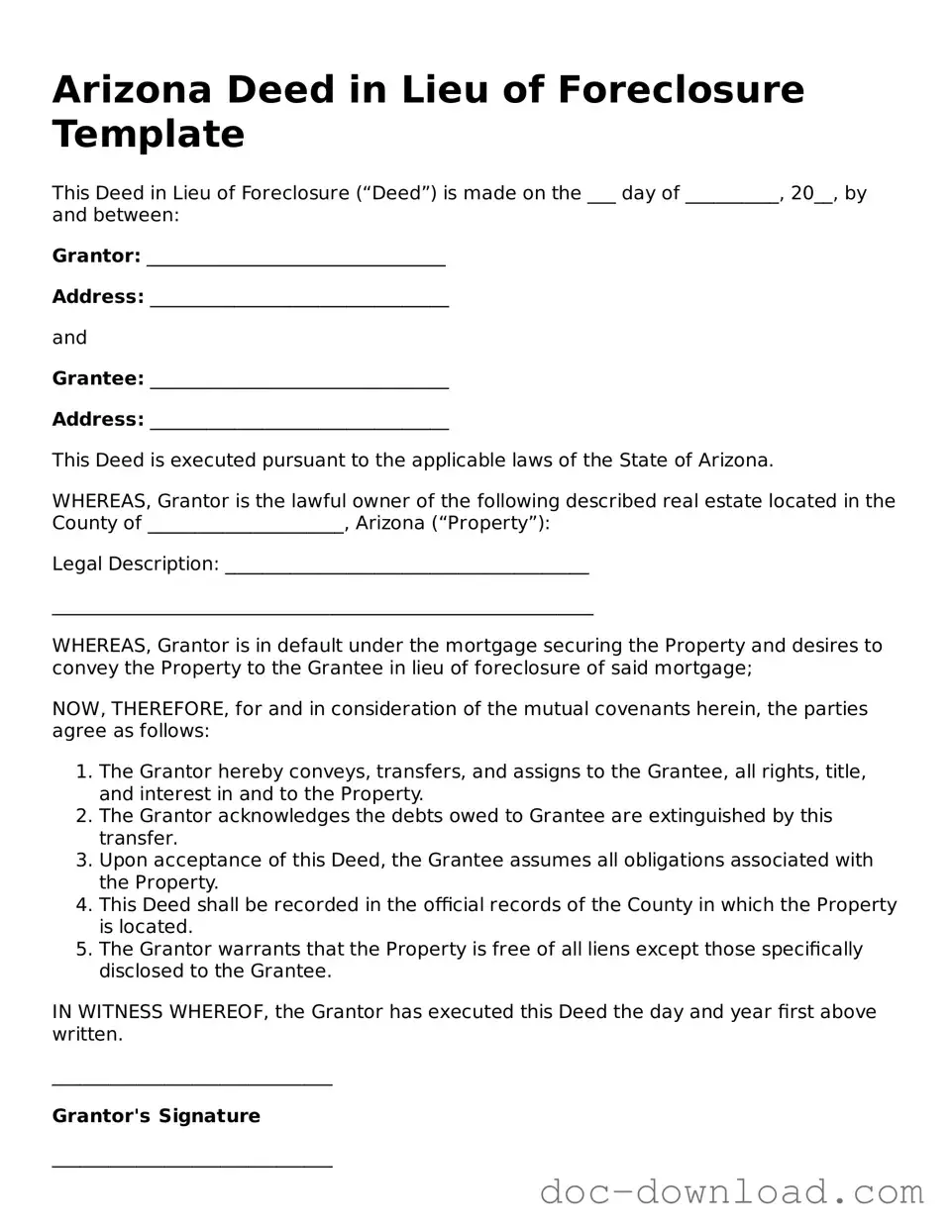Arizona Deed in Lieu of Foreclosure Template
This Deed in Lieu of Foreclosure (“Deed”) is made on the ___ day of __________, 20__, by and between:
Grantor: ________________________________
Address: ________________________________
and
Grantee: ________________________________
Address: ________________________________
This Deed is executed pursuant to the applicable laws of the State of Arizona.
WHEREAS, Grantor is the lawful owner of the following described real estate located in the County of _____________________, Arizona (“Property”):
Legal Description: _______________________________________
__________________________________________________________
WHEREAS, Grantor is in default under the mortgage securing the Property and desires to convey the Property to the Grantee in lieu of foreclosure of said mortgage;
NOW, THEREFORE, for and in consideration of the mutual covenants herein, the parties agree as follows:
- The Grantor hereby conveys, transfers, and assigns to the Grantee, all rights, title, and interest in and to the Property.
- The Grantor acknowledges the debts owed to Grantee are extinguished by this transfer.
- Upon acceptance of this Deed, the Grantee assumes all obligations associated with the Property.
- This Deed shall be recorded in the official records of the County in which the Property is located.
- The Grantor warrants that the Property is free of all liens except those specifically disclosed to the Grantee.
IN WITNESS WHEREOF, the Grantor has executed this Deed the day and year first above written.
______________________________
Grantor's Signature
______________________________
Grantee's Signature
STATE OF ARIZONA
COUNTY OF _____________________
This instrument was acknowledged before me on the ___ day of __________, 20__, by ________________________________.
______________________________
Notary Public
My Commission Expires: ______________
